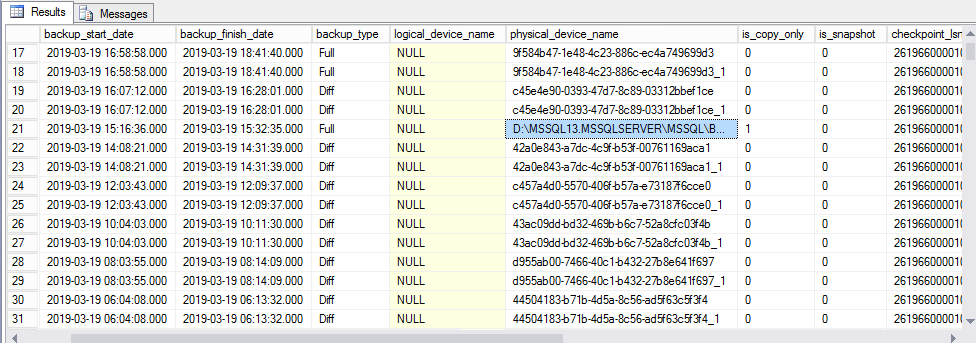Today i have this warning in my Veeam Backup and Replication backup job log, for an SQL server:
Failed to finalize guest processing. Details: Failed to call RPC function ‘Vss.TruncateSqlLogs’: Error code: 0x80004005. Failed to invoke func [TruncateSqlLogs]: Unspecified error. Failed to process ‘TruncateSQLLog’ command. Failed to truncate SQL server transaction logs for instances: . See guest helper log.
I found this in the event viewer on the SQL server:
BACKUP failed to complete the command BACKUP LOG [databasename]. Check the backup application log for detailed messages.
So i check the veeam backup log file on the SQL server:
C:\ProgramData\Veeam\Backup
File VeeamGuestHelper_Lastdatefile.log
Where i see this:
19-12-2022 02:08:56 5080 Database found: [databasename]. Recovery model: 1. Is readonly: false. State: 0.
19-12-2022 02:13:56 5080 WARN Cannot truncate SQL logs for database: [databasename]. Code = 0x80040e31
19-12-2022 02:13:56 5080 WARN Code meaning = IDispatch error #3121
19-12-2022 02:13:56 5080 WARN Source = Microsoft OLE DB Driver for SQL Server
19-12-2022 02:13:56 5080 WARN Description = Query timeout expired
19-12-2022 02:13:56 5080 WARN No OLE DB Error Information found: hr = 0x80004005
What i did to fix this error is that i give the user: NT AUTHORITY\SYSTEM the rights db_backupoperator rights to the specific database, that fault.
And also change this timeout value in regedit:
Windows Registry Editor Version 5.00
[HKEY_LOCAL_MACHINE\SOFTWARE\Veeam\Veeam Backup and Replication]
"SqlExecTimeout"=dword:00000600
"SqlLogBackupTimeout"=dword:00003600
"SqlConnectionTimeout"=dword:00000300
And also under WOW6432Node
Windows Registry Editor Version 5.00
[HKEY_LOCAL_MACHINE\SOFTWARE\WOW6432Node\VeeaM\Veeam Backup and Replication]
"SqlLogBackupTimeout"=dword:00003600
"SqlExecTimeout"=dword:00000600
"SqlConnectionTimeout"=dword:00000300
Then try to running the job again.




